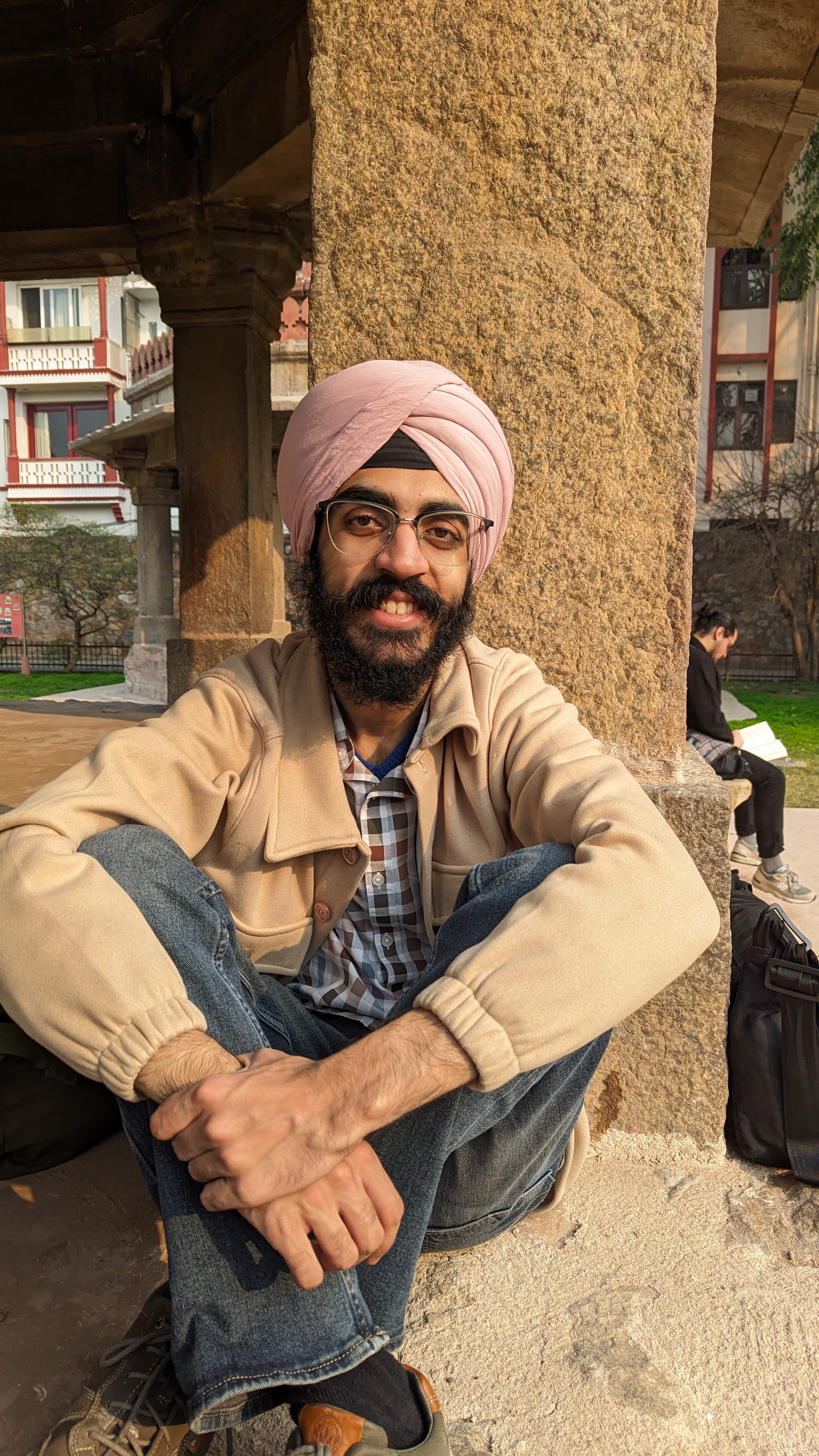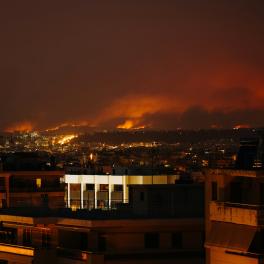
The Punjab Problem
The little Indian state of Punjab, with a population of just about 27 million as per 2011 Census (small, relative to the current national population of 1.4 billion) has had an incredibly rocky history. And it's once again at the front of news channel debates. And it matters.
The state is no stranger to violence. The region has seen great kingdoms wax and wane, put up brave fronts over waves of invasions, given birth to a martial race (though now an outdated idea, conceived for British colonial convenience), and a land often considered synonymous with rebellion and dissent. The peak however, not in some figure of lives lost but in the scarring of the state’s socio-political psyche was during its decades-long battle with insurgency.
The Beginning, and Partition
But let’s start at the beginning. The last century, has been one of violence, deprivation, pain and hardship for this state once considered the fortress and citadel of India, the last stand against the British Colonialism.
In the late 1940s, as the country was nearing independence, the idea of partition gained traction nationally. But the state that was going to bear the worst of it, was also the least at ease with it. How could you, after all, ask the Sikhs to choose between the so-called “Hindu” and “Muslim- sides”? (Recommended reading: While not necessary, a brilliant account of modern Indian political history from the 1940s to 2010s is Ramchandra Guha's India After Gandhi and is perhaps the most perfect introduction to this subject)
For the Sikhs, if the proposed Indian Punjab was home to their holiest shrine, the Golden Temple in Amritsar, the Pakistan Punjab had Nankana Sahib, the said birthplace of their community, or Kartarpur Sahib (Where Guru Nanak is said to have breathed his last) To this day, the idea of partition is viewed in disdain in local cultures.
Following months of denial, reluctance and inertia, the partition ensued in a bloody manner. A mass forced migration of a scale heretofore unseen took place alongside communal violence that would still be considered unimaginable. An estimated 1-2 million lives were lost.
The Insurgency Years
If 1940s and 50s were the years of scars and pain, 1960s saw the onset of the green revolution. The state adopted modern agrarian practices, leading to a sudden and large boom in the state economy and prosperity. But in pocketed areas of the state without resources to invest in better resources or small land holdings, this also gave rise to inequality and discontent. In the 70s, these areas later became the breeding ground for insurgency. To quote P.N Junankar:
An inevitable consequence of the Green Revolution has been increasing inequality in rural India. As the high-yielding varieties of crops require regular supply of irrigation and fairly large amounts of fertilisers, the advantage has been biased towards the large farms. These farms have also begun to substitute capital (e g, tractors) for labour. Since the new varieties are profitable there would be an increase in capitalist farming, an attempt by landlords to evict their tenants and cultivate the land with hired labour, and an attempt by large farmers to buy out small farmers. (see citation here)
In the 70s, these developments were followed by a slew of activities eventually evolving to a deadly militant movement. This was exacerbated greatly by the financing and support of cross-border terror. Young Sikh youth were radicalised into what was largely a fringe movement for secession growing out of local dissent. It is unlikely that the situation would ever have spiralled so out of control, if it weren’t for complacency in reigning in these fringe elements by the state and central government. It wouldn’t be till the early 1980s that the central government would actively intervene in the situation, even though secessionist “resolutions” such as ‘Anandpur Sahib Resolution of 1973’ (note how the translation of the resolution cited here is by a terror monitoring watchdog) had already surfaced a decade before, asking for separation of the state from the nation. In complacency, thus, the government was equally responsible for the problem.
The insurgency would later peak in 1980s and 90s, in phases – with the period between 1983-84 being the most well documented of them all. 1984- The central armed forces laid siege to the holiest Sikh shrine to (successfully) gun down the self-styled leader of Khalistan, Jarnail Singh Bhindrawale.
Among the armed personnel, civilians and terrorists who lost their lives, perhaps the biggest casualty was of the state’s psyche. Operation Blue Star haunts Punjab to this day, and the period is recounted but only in murmurs, like a dark, unspeakable truth, a part of collective history everybody would rather forget.
It was in the early 1990s- around 1993 that the state finally achieved peace through a combination of efforts from state and central armed forces. An uneasy calm has since ensued, discontent still lingers large, and the state is in deep economic stall and the people discontent.
And then, the present
Once again, it is prudent to note that all this while, this was a tussle between an armed faction of Sikh radicals and the Government of India. Caught in between, were the people of Punjab. The vast majority of the state would never have supported, nor would do so now, complete independence from India, as has been well documented. (See, another citation here) But history tells us that even small armed, loud lobby groups can take an entire state hostage.
Which brings us to present. The state is in an economic crisis, (also, here) the people are discontent and unlike in its peer states, industrial investment is sparse. The state still relies deeply on agriculture after all these years, and there’s a need for economic revival. There’s a drug menace that the state is struggling to reign in and a significant surge in terror activities in the state after more than two and a half decades. The latest Amritpal Singh case only illustrates that.
It would be a hyperbole to claim that the state is anywhere like what it was in the late 70s or early 80s. Lawlessness and crime ran much wilder and unbated, and there were even districts that were so-called liberated (such as Tarn Taran) where the government writ didn’t run. But history tells us to err towards caution, to keep an eye out and not less the situation exacerbate. Nobody wants a repeat of the damage the state has gone through, not the government, not its people.
Content Disclaimer: The views & opinions expressed in this article are those of the author and do not necessarily reflect the views of VoiceBox, affiliates, and our partners. We are a nonpartisan platform amplifying youth voices on the topics they are passionate about.
Support Young Creators Like This One!
VoiceBox is a platform built to help young creators thrive. We believe that sharing thoughtful, high-quality content deserves pay even if your audience isn’t 100,000 strong.
But here's the thing: while you enjoy free content, our young contributors from all over the world are fairly compensated for their work. To keep this up, we need your help.
Will you join our community of supporters?
Your donation, no matter the size, makes a real difference. It allows us to:
- Compensate young creators for their work
- Maintain a safe, ad-free environment
- Continue providing high-quality, free content, including research reports and insights into youth issues
- Highlight youth voices and unique perspectives from cultures around the world
Your generosity fuels our mission! By supporting VoiceBox, you are directly supporting young people and showing that you value what they have to say.





